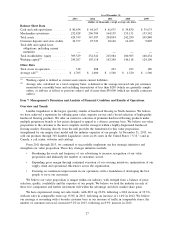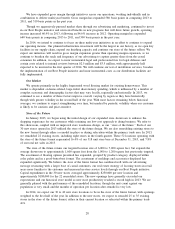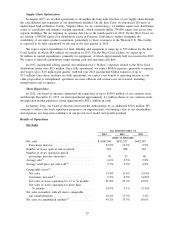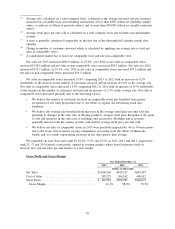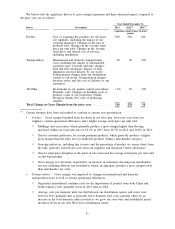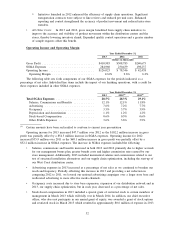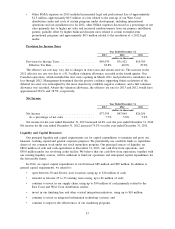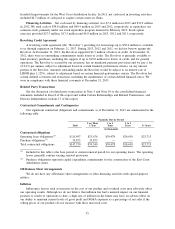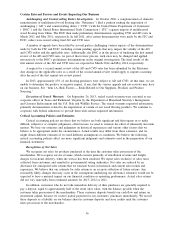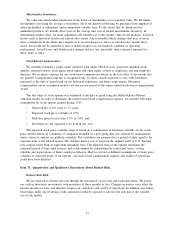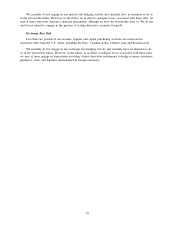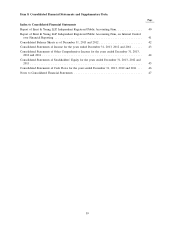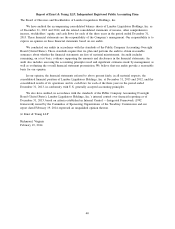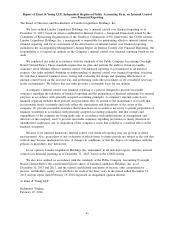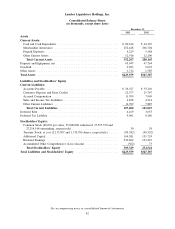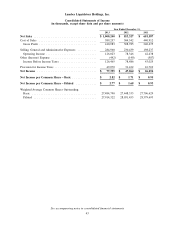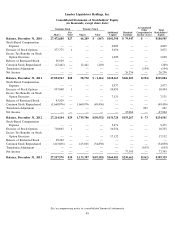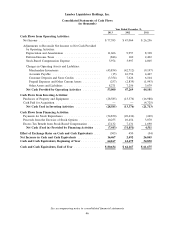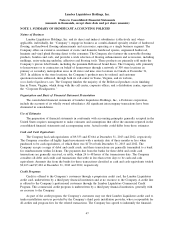Lumber Liquidators 2013 Annual Report Download - page 47
Download and view the complete annual report
Please find page 47 of the 2013 Lumber Liquidators annual report below. You can navigate through the pages in the report by either clicking on the pages listed below, or by using the keyword search tool below to find specific information within the annual report.Merchandise Inventories
We value our merchandise inventories at the lower of merchandise cost or market value. We determine
merchandise cost using the average cost method. All of the hardwood flooring we purchase from suppliers is
either prefinished or unfinished, and in immediate saleable form. To the extent that we finish and box
unfinished products, we include those costs in the average unit cost of related merchandise inventory. In
determining market value, we make judgments and estimates as to the market value of our products, based on
factors such as historical results and current sales trends. Any reasonably likely changes that may occur in
those assumptions in the future may require us to record charges for losses or obsolescence against these
assets, but would not be expected to have a material impact on our financial condition or operating
performance. Actual losses and obsolescence charges did not vary materially from estimated amounts for
2013, 2012 or 2011.
Stock-Based Compensation
We currently maintain a single equity incentive plan under which we may grant non-qualified stock
options, restricted shares, stock appreciation rights and other equity awards to employees and non-employee
directors. We recognize expense for our stock-based compensation based on the fair value of the awards that
are granted. Compensation expense is recognized only for those awards expected to vest, with forfeitures
estimated at the date of grant based on our historical experience and future expectations. Measured
compensation cost is recognized ratably over the service period of the entire related stock-based compensation
award.
The fair value of stock options was estimated at the date of grant using the Black-Scholes-Merton
valuation model. In order to determine the related stock-based compensation expense, we used the following
assumptions for stock options granted during 2013:
• Expected life of 6.0 years to 7.5 years;
• Expected stock price volatility of 45%;
• Risk-free interest rates from 1.3% to 2.0%; and
• Dividends are not expected to be paid in any year.
The expected stock price volatility range is based on a combination of historical volatility of our stock
price and the historical volatilities of companies included in a peer group that was selected by management
whose shares or options are publicly available. The volatilities are estimated for a period of time equal to the
expected term of the related option. The risk-free interest rate is based on the implied yield of U.S. Treasury
zero-coupon issues with an equivalent remaining term. The expected term of the options represents the
estimated period of time until exercise and is determined by considering the contractual terms, vesting
schedule and expectations of future employee behavior. Had we arrived at different assumptions of stock price
volatility or expected terms of our options, our stock-based compensation expense and results of operations
could have been different.
Item 7A. Quantitative and Qualitative Disclosures About Market Risk.
Interest Rate Risk.
We are exposed to interest rate risk through the investment of our cash and cash equivalents. We invest
our cash in short-term investments with maturities of three months or less. Changes in interest rates affect the
interest income we earn, and therefore impact our cash flows and results of operations. In addition, any future
borrowings under our revolving credit agreement would be exposed to interest rate risk due to the variable
rate of the facility.
37


